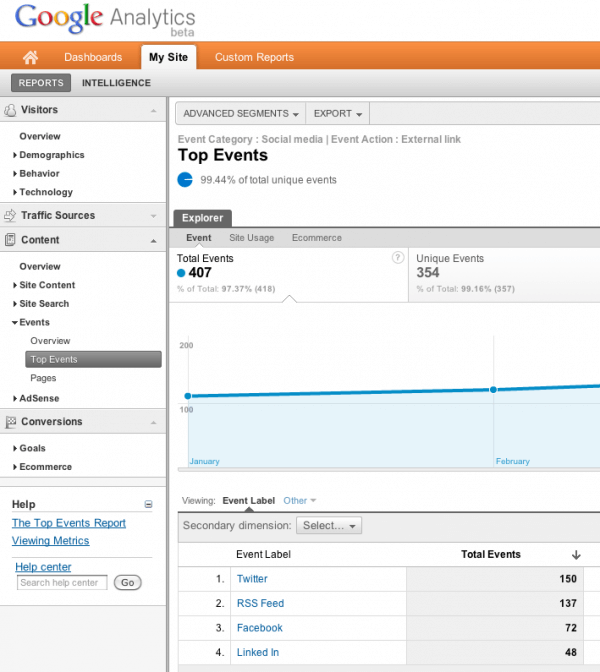Key Insights on What Data Is Google Analytics Goals Unable to Track
Key Insights on What Data Is Google Analytics Goals Unable to Track
Blog Article
Introducing the Blind Destinations: Recognizing What Google Analytics Goals Can not Measure
In the world of electronic analytics, Google Analytics stands as a powerful device for tracking and evaluating on the internet customer communications. Understanding what Google Analytics goals can not determine is essential for gaining a comprehensive sight of individual actions and involvement.
Individual Actions on External Platforms
Comprehending exactly how customers interact on external systems is vital for enhancing online strategies. Outside platforms, such as social media sites networks, referral sites, and on the internet discussion forums, play a considerable role in driving web traffic to a company's site. By analyzing user habits on these platforms, businesses can get beneficial understandings right into the efficiency of their advertising efforts and the choices of their target market.
One trick facet of individual actions on exterior systems is the referral resource. By tracking where the individuals are coming from, services can identify which systems are driving one of the most traffic to their site. This information can assist business designate their sources better, focusing on the systems that yield the most effective outcomes.
Offline Conversions and Interactions
Analyzing customer behavior on external systems supplies useful insights right into on the internet techniques; nevertheless, considering offline conversions and interactions is equally important for a comprehensive understanding of a business's total performance. Offline conversions, such as in-store acquisitions or phone inquiries, play a considerable function in numerous businesses' success.

Acknowledgment Beyond Last Click
When diving into the world of electronic advertising analytics, it becomes vital to look past the solitary touchpoint of the last click for an extra thorough understanding of acknowledgment. While Google Analytics supplies useful understandings into user actions, counting entirely on last-click attribution can be limiting - what data is google analytics goals unable to track. Attribution versions that exceed the last click supply a much more nuanced sight of the client journey, considering all the touchpoints that cause Get the facts a conversion
Attribution beyond the last click enables marketers to appoint debt to various communications along the conversion path, offering a clearer image of the performance of various advertising and marketing networks. By discovering multi-touch acknowledgment designs such as linear, time decay, or position-based attribution, services can better allocate their marketing spending plans and optimize their methods for maximum influence.
Understanding the influence of each touchpoint in the conversion procedure is important for making notified choices and making best use of ROI. By embracing attribution beyond the last click, organizations can obtain deeper insights into customer behavior and tailor their advertising and marketing initiatives a lot more properly.
Cross-Device and Cross-Browser Tracking

Likewise, cross-browser tracking enhances cross-device monitoring by capturing customer habits as they change in between various internet browsers. Comprehending just how users interact with websites on numerous web browsers can aid marketing professionals maximize their on the internet experiences to make sure consistency and capability throughout different platforms.
Qualitative Information and User Intent
Understanding individual intent with qualitative information evaluation is crucial for developing targeted electronic advertising approaches that resonate with the requirements and choices of the target audience. Qualitative data gives understandings right into the 'why' behind individual actions, clarifying motivations, feelings, and choices that measurable data alone can not record. By examining individual responses, comments, and communications, online marketers can uncover beneficial information regarding customer intent, enabling them to customize their messaging, material, and offerings to better line up with what their audience is looking for.
Qualitative data additionally aids in recognizing the context in which customers engage with a web site or app. look at these guys This contextual understanding enables marketing experts to create even more pertinent and personalized experiences, eventually driving greater involvement and conversion prices. By delving into customer intent internet via qualitative data analysis, services can obtain a deeper understanding of their target market, resulting in much more efficient advertising and marketing approaches that fulfill users' requirements and assumptions.
Final Thought
In final thought, Google Analytics goals have limitations in determining customer behavior on outside platforms, offline conversions, acknowledgment past last click, cross-browser and cross-device tracking, and qualitative information associated with customer intent. what data is google analytics goals unable to track. It is very important for services to be familiar with these blind spots in order to supplement their information evaluation with other tools and techniques to acquire a more detailed understanding of their target market and boost their general digital marketing techniques
By examining user habits on these systems, services can acquire useful insights right into the effectiveness of their advertising and marketing efforts and the choices of their target audience.
Evaluating user habits on external systems gives important insights into on-line methods; nonetheless, thinking about offline conversions and interactions is equally necessary for a thorough understanding of a firm's overall efficiency.In electronic marketing analytics, moving past last-click attribution to check out cross-device and cross-browser monitoring is vital for gaining an alternative understanding of user communications across various platforms and gadgets. By examining user comments, comments, and interactions, marketers can reveal valuable info about customer intent, permitting them to tailor their messaging, content, and offerings to better straighten with what their audience is looking for.
By diving right into individual intent via qualitative data evaluation, companies can obtain a much deeper understanding of their target audience, leading to much more effective advertising and marketing strategies that meet customers' expectations and demands.
Report this page